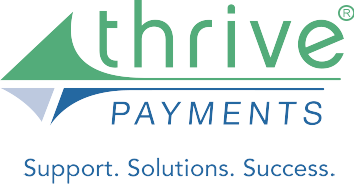For museums, credit and debit card payment acceptance can be a significant expense. This article is designed to provide a clearer perspective on the cost components involved, the pricing methodologies of merchant service providers, and some pros and cons of software companies integrating payments into their offering. Further, we will explore the merchant statement and leverage industry knowledge and experience to provide suggestions on how to reduce your cost of card acceptance.
Cost Components
Card acceptance involves several cost components and within each one, there can be a great deal of complexity. The single largest cost is called “interchange fees,” and this is typically 75-80% of the cost of acceptance and about 1.9% of your sales volume. Although the cost can be higher for certain situations, namely if the card is not present or when commercial/business cards are used. Interchange fees paid to the credit or debit card issuer by the bank or provider with whom you have a merchant services relationship. Then they are then charged to you either as a “pass through” expense or included in a bundled percentage of sales called, ironically, a “discount rate”. Between the four primary card networks (American Express, Discover, Mastercard and Visa) there are close to 1,000 different possible interchange rates, dependent on a number of factors including, but not limited to: the card brand, the product type, the type of business accepting the card, and the method of acceptance, such as whether the card was present. Most businesses will see 20-40 different interchange rates on their merchant statement.
The card networks also charge assessments based on sales volume plus a myriad of other fees, for everything from digital wallet use to foreign cards accepted. Assessments generally cost about .14% of your sales volume, while the other various fees typically account for a much smaller percentage.
In addition to card network fees, your provider incurs transaction processing expenses for the creation of a month-end statement and your use of both an online reporting portal and a PCI compliance tool. These expenses are a much smaller component than the card network fees and are usually charged to you in the form of a transaction cost and one or more fixed monthly fees.
Finally, your provider will be charging for their services and work in provisioning card acceptance. This is generally charged in the form of a “discount rate”. The discount rate may range from .10% to .80% if the card network fees are being charged separately, or alternatively, may range from 2.00% to 3.50% or more, if those fees are bundled into a simpler rate.
Pricing Methodologies
Merchant services providers have several ways of charging for payment acceptance. The traditional, more outdated method is to charge what is called a “bundled” discount rate on sales volume processed.
More common today is for the provider to pass-through card network fees, including interchange fees, and then to charge a small discount rate, transaction fee, and monthly fees. Card network fees passed through without any upcharge is typically the method most advantageous to the business, as card network fees comprise the vast majority of card processing expense and you are charged exactly what the provider would have been charged. Further, this practice also provides transparency into what your business is being charged, while simultaneously allowing the opportunity to manage those fees and detect any “upcharges” that may have otherwise been hidden using publicly available card network fee data.
Still other providers will segregate card network fees and other expenses into 2 or 3 different rates – this is called a tiered discount rate method and sales will typically be identified as Qualified, Mid-Qualified and Non-Qualified. In this model, the provider is taking potentially hundreds of different fees and placing them into one of these three buckets. While this is easier for the business to understand, it often inflates costs unnecessarily.
Proprietary Software System Processing vs. Open Processing
If you have a point-of-sale or business management system, which usually provides a wide range of software options for managing the business such as inventory and ticketing, the software vendor may have an exclusive arrangement with a payment acceptance provider and thus, can lock you into set costs which are typically higher than market rate.
Some software providers have enabled their platforms to allow any payment acceptance provider to perform the payment component if their processing platform is certified to work with the software system. This “open” structure is ideal for the business, as it allows competitive pricing and the ability to work with a provider of choice.
When choosing a new software system, this should be a consideration, but it may not outweigh other functionality. All things being equal, it’s best to choose a system that allows you flexibility and choice in payment acceptance.
Statements
Most businesses find their merchant services statement to be complicated and cryptic – and we couldn’t agree more! Part of the complexity is the necessary disclosure of transaction information and pricing. Providers that pass-through card network fees have more complex statements with a lot of data; however, that is an opportunity for your bookkeeping or finance team to drill down into the expenses and perhaps find opportunities to better manage them. A good provider will spend the time reviewing your statement if you need assistance understanding it and will help look for possible cost reductions from the card networks.
Opportunities to Reduce Cost
Here are a few ways you may be able to reduce costs for payment acceptance:
- Review your statement’s interchange fee section for sales volume that is being charged at rates over 2% - this may be a result of the processing method utilized and perhaps a good instigator to change it.
- Look for fees on your statement for PCI non-compliance – these are fees for not completing your required PCI compliance process, such as the Self-Assessment Questionnaire (SAQ) or scan – these are easy to avoid by maintaining proper compliance.
- Compare your interchange fee expense rates with publicly available rate sheets to ensure these fees are being pass through without an upcharge.
Summary
Payment acceptance, also known as “merchant services” can be a complex, but necessary, component of your business. Choose a reputable provider that is willing to help you understand your costs and work with you towards a mutually beneficial business relationship.
Visit Thrive Payments to learn more about merchant services and how they can meet your needs.
About the Author

Theodore Keith, Jr. is the president and CEO of Thrive Payments, a payments company with a 41-year history of serving businesses throughout the U.S. Thrive Payments is a Corporate Member and proud supporter of the Western Museums Association. T.K. Keith Company, Inc., doing business as Thrive Payments, is a registered Independent Sales Organization of Wells Fargo Bank, N.A., Concord, CA








